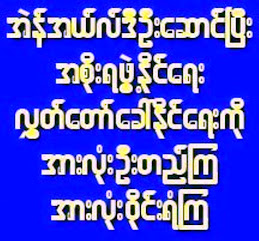Thursday, 25 Sep 2008 08:55
12 months on from Saffron Revolution, more than 2,000 political prisoners still in Burma, human rights groups warn
Twelve months ago to the day the Burmese army was deployed to streets in major cities across the country in response to demonstrations that began in protest at fuel price rises.
Thousands were detained as a curfew was imposed, with the junta admitting that nine people – including Japanese photojournalist Kenji Nagai – died in the crackdown.
But international observers said the death-toll was likely to be much, much higher.
On the eve of the crackdown Amnesty International UK said there were 1,150 political prisoners in Burma, but that the figure now stands at 2,100.
The human rights group says it has "grave concerns" over their chances of release and accuses the UN's special advisor Ibrahim Gambari of achieving nothing other than 'implicit endorsement' of the Burmese regime in his several missions to the country.
Saffron Revolution timeline (source: Amnesty International UK)
August 15th 2007: Burmese government increases the cost of fuel as petrol and diesel double in price, while gas goes up fivefold
August 19th: 400 people march in Rangoon in the largest Burmese demonstration of the century
September 5th: Monks join the protests after a peaceful rally is broken up in Pakokku
September 17th: Monks take to the streets in their thousands in the main cities and towns after no apology is offered for the three monks injured in the Pakokku rally as the Saffron Revolution phrase is first coined
September 21st: The Alliance of All Burmese Buddhist Monks emerges to organise the protests as the military is dubbed "the enemy of the people"
September 24th: The protests' largest march takes place in Rangoon as National League for Democracy activists join the demonstrations in larger numbers
September 25th: The government crackdown begins as a curfew is imposed and hundreds of troops are deployed
September 26th: Television pictures show police using baton charges and tear gas as protestors are attacked and dissidents – including monks – are rounded up and detained
September 27th: The junta admits killing nine people, including Japanese photojournalist Kenji Nagai
In the build up to the anniversary, any commemoration of which will be suppressed by the junta, military chiefs arranged the release of seven political prisoners, including 78-year-old U Win Tin – one of the country's longest-serving prisoners of conscience.
Amnesty International's Burma researcher Benjamin Zawacki welcomed the seemingly unconditional release - U Win Tin had spent the last 19 years in jail – but reiterated that more than 2,000 prisoners of conscience still remained in custody.
"The release of these seven political prisoners is most welcome," he said. "But this is not – and cannot be seen as – an end in itself, only the beginning."
Mr Zawacki told inthenews.co.uk that the source of last year's protests – increases in fuel prices – gave hope to anti-junta movements.
"Economic mismanagement with political persecution, that's a real recipe for change," he explained.
"But when and how is very difficult to predict."







No comments:
Post a Comment